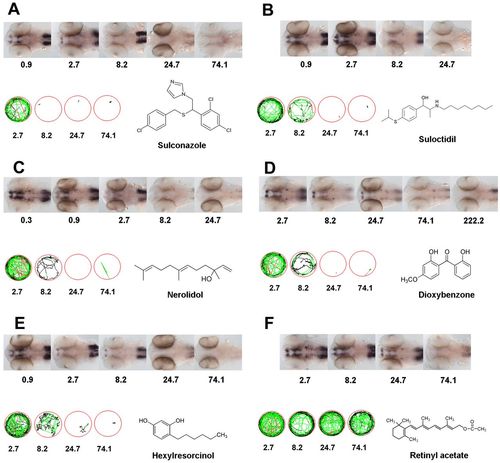Fig. 5
- ID
- ZDB-FIG-121130-36
- Publication
- Baxendale et al., 2012 - Identification of compounds with novel anti-convulsant properties in a zebrafish model of epileptic seizures
- Other Figures
- All Figure Page
- Back to All Figure Page
|
Identification of compounds with anticonvulsant activity in the zebrafish embryo. Previously unknown inhibitors of neural activity were identified within the Microsource Spectrum Collection, on the basis of their concentration-dependent suppression of PTZ-induced fos expression and inhibition of PTZ-induced locomotor activity. Compounds were administered to embryos for 90 minutes in 96-well plates, at a final concentration of 0.9, 2.7, 8.2, 24.7 or 74.1 μM (as indicated), then 20 mM PTZ was added, and embryos were then incubated for a further 60 minutes before being fixed and analysed for expression of fos. In parallel, 4-day-old zebrafish larvae were exposed to the same range of compound concentrations in 48-well plates for 90 minutes, then PTZ was added and larvae were incubated for a further 10 minutes. 48-well plates were then transferred to the Viewpoint Zebrabox for live tracking of locomotor activity over a 10 minute period. Black, green and red traces indicate swimming speeds of 0–1.5, 1.5–6 and >6 mm/second, respectively. (A) Sulconazole; (B) suloctidil; (C) nerolidol; (D) dioxybenzone; (E) hexylresorcinol; (F) retinyl acetate. |

